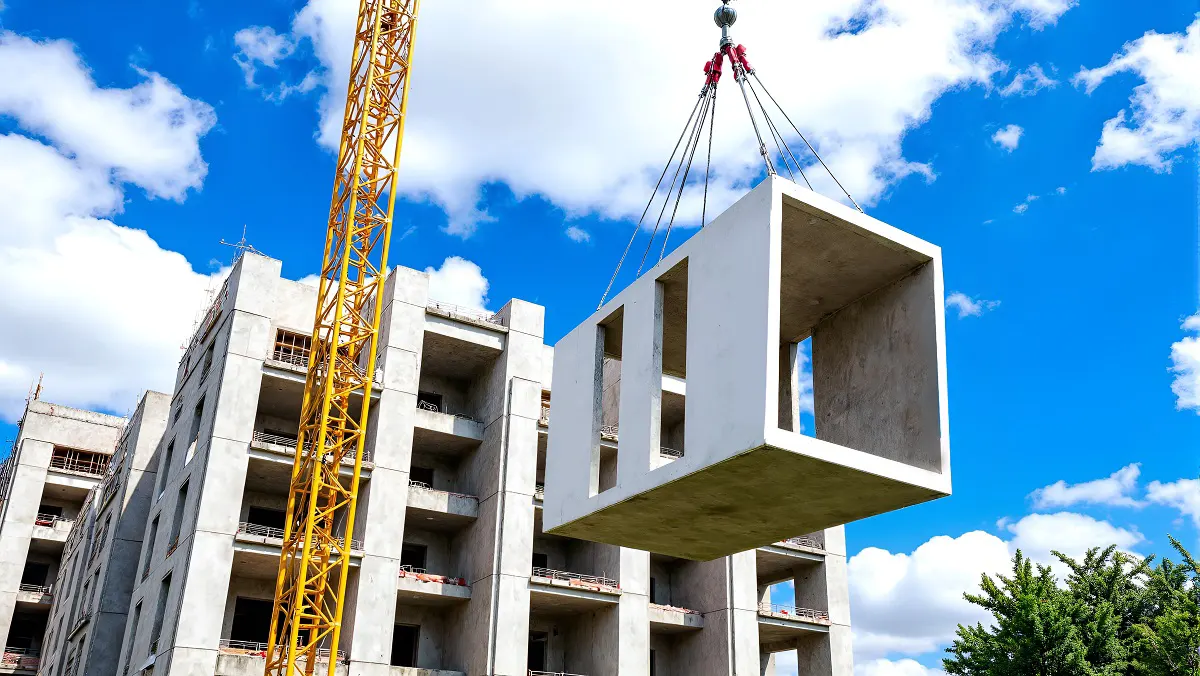GENERAL
Sweet Precision: The Charm and Craft of Sugar Cubes

Sweet Precision: The Charm and Craft of Sugar Cubes
From cafés to cocktail lounges and artisan ateliers, sugar cubes represent more than mere sweetness—they are sweet precision in physical form. Sugar cubes first appeared in the 19th century as a creative solution to the cumbersome sugarloaf, and today they thrive in tea rituals, mixology, decorative crafts, and even art installations.
A Slice of History: From Sugarloaf to Cube
In the early 1840s, Jakub Christoph Rad, director of a sugar refinery in Dačice (now Czech Republic), invented sugar cubes after his wife injured herself trimming a sugarloaf. Using moist granulated sugar pressed into trays and dried to perfect shape, Rad transformed sugar into both a safer and more elegant form . His innovation sparked the eventual rise of cube shaping in tableware.
The industrial revolution followed. Eugen Langen’s centrifuge processing and Karl Hellmann’s individual wrapping galvanized mass production, helping Tate & Lyle bring cube sugar to British households in 1875.
The Cube in Daily Rituals: Tea to Tabletop Art
Ritual of Refinement
A cube offers a consistent teaspoon of sweetness (typically 3–5 g), ideal for tea houses and coffee tables. In Victorian salons, presenting perfectly shaped sugar cubes suggested order and elegance. This artisanal precision continues in modern ritual: whether using a bridge cube for afternoon tea or a flower-pressed cube at a bridal brunch.
From Utility to Art
Today, artisans craft decorative sugar cubes infused with rose petals, lavender, or even edible gold. Others assemble sugar sculptures—like Brendan Jamison’s “Sugar Metropolis”—that showcase the delicate nature of sugar moldings and the possibilities of edible sculpture .
Practical Uses Beyond Sweetening
Sugar cubes also solve everyday issues: they absorb moisture in jars, help deodorize containers, or float in homemade attractions like DIY sugar cube trains. Their hygroscopic storage properties mean they’re remarkably versatile beyond the espresso bar.
Crafting at Home: DIY Sugar Cube Workshop
Creating your own sugar cubes at home is both simple and rewarding.
-
Choose your granulated sugar—caster sugar provides smoother moldings; raw cane gives a rustic feel.
-
Mix sugar with a few drops of water (or herb-infused liquid), press into silicone molds, and allow them to dry lightly on a tray.
-
After 24 hours, pop out the cohesive cubes—perfect for decorating coffee tables or gifting to tea enthusiasts.
Additions like dried lavender, citrus zest, or edible flowers turn plain cubes into artisan sugar cubes. These homemade versions are ideal for elegant gatherings or thoughtful presents.
Mixology Magic: The Cube in Cocktails
The ritual behind classic cocktails—especially the Old Fashioned—is inseparable from the sugar cube.
“Using a sugar cube instead of simple syrup is crucial for achieving the desired texture and taste. The sugar cube provides a controlled release of sweetness…
The cube is placed in a rocks glass, briefly soaked with a dash of Angostura bitters and a splash of soda water, then muddled to form a rich syrup. Only then is whiskey added and stirred over ice .
Modern Twist on the Old Fashioned
Visuals: Artisan Cubes & Mixology
Here are three images showcasing sugar cubes beyond mere sweetness:
-
Artisan pink cubes with floral accents—perfect for bridal teas.
-
Hand-decorated cubes, ideal as table decor at events.
-
Old Fashioned bitters-infused cube, ready to muddle in craft cocktails.
The Science and Semantics: Sugar in Cube Form
Sugar cubes are compact representations of table sugar—typically granulated—with hygroscopic behavior that demands airtight containers to prevent clumping. Each cube is a standardized sweetener, ensuring consistency from cup to cocktail.
LSI terms like granulated sugar, cube shaping, sugar moulding, flavored sugar cube
, artisan sugar cubes, decorative sugar cubes, cocktail sugar cube, and sugar sculpture all naturally relate to these functions and forms.
Health Note: A Spoonful of Caution
Each cube represents around 16–20 calories. While perfect for sugar cocktails or sweet tea, overuse can contribute to excessive sugar intake. The World Health Organization recommends limiting added sugars to under 10% of daily calories—which is about four cubes a day in a 2,000‑calorie diet.
FAQs
Q1: Who invented sugar cubes and why?
Jakub Christoph Rad invented them in the early 1840s in Dačice to avoid injuries from slicing sugarloafs. He patented the cube in 1843
Q2: How do artisan sugar cubes differ from mass-produced ones?
>>>>>>>Artisan cubes use varied sugar types (e.g., demerara, cane) and often include edible flowers or flavor infusions, pressed into silicone molds for decorative appeal.
Q3: Why are sugar cubes preferred in an Old Fashioned?
>>>>>>>Their slow dissolution provides a textured syrup that enhances flavor layering—from bitter to sweet—while honoring the historical ritual of muddling .
Q4: How should I store sugar cubes to prevent clumping?
Use airtight containers with a dry desiccant pack in a cool, moisture-free environment. Properly stored cubes can last over a year.
Q5: Can I use flavored sugar cubes in tea or crafts?
Absolutely—infused cubes with lavender or citrus add aroma to tea and visual elegance to events. They’re also perfect for DIY gifts and table décor.
Conclusion
Sweet Precision: The Charm and Craft of Sugar Cubes reflects the enduring appeal of this simple innovation—from its historic invention by Rad to modern artisan morphologies and mixology techniques.
Whether sweetening tea, styling a dessert, garnishing a cocktail, or creating edible art, sugar cubes combine form and function with elegance.
Their precise shape, standardized measure, and decorative versatility make them both practical and delightful. Next time you drop a cube into your tea, cocktail, or garden-inspired centerpiece, remember the craftsmanship—and history—packed in that tiny sweet block.
GENERAL
Why Anon Vailt Is a Top Privacy-Focused Vault

Anon Vailt is an innovative platform designed for anonymous cloud storage and secure file backups. Unlike traditional cloud services, it emphasizes zero-knowledge storage, meaning the provider doesn’t have access to your encryption keys or data content. This approach ensures data privacy protection for individuals, freelancers, and businesses handling sensitive documents.
At its core, Anon Vailt positions itself as more than just a file repository. It’s a secure online vault that combines strong encryption, user-friendly design, and features tailored to 2025’s security standards.
Key Features of Anon Vailt
When evaluating any cloud platform, understanding its features is critical. Here’s what users can expect from anon vailt app features:
Encrypted File Vault
All files are encrypted before leaving your device, ensuring that no third party—including the platform—can access your content. This level of protection is crucial for personal documents, legal files, and sensitive work materials.
Secure File Storage
With secure file storage, users can upload, organize, and manage files with confidence. Multi-layer authentication and robust encryption standards are built into the platform.
Zero-Knowledge Storage
Anon Vailt uses a zero-knowledge storage model, meaning even if the servers were compromised, your files remain unreadable without your private keys.
Cyber Security Storage Tools
Advanced tools monitor file integrity, detect suspicious login attempts, and alert users to potential threats. For those who prioritize cyber security storage tools, this is a notable advantage over conventional cloud providers.
Anonymous Cloud Storage Access
You can access your files without linking personal identifiers, allowing for anonymous cloud storage experiences that protect your digital footprint.
How to Use Anon Vailt
Using the platform is straightforward, yet robust:
Anon Vailt Login – Sign up using a unique username and strong password. No personal email is required.
File Upload – Drag and drop files into the secure online vault. All files are automatically encrypted.
Organization – Categorize files, set permissions, or create folders.
Sharing – If needed, generate secure links without exposing your identity.
Backup – Use secure file backup features to ensure redundancy.
It’s a mix of convenience and security — ideal for both personal use and professional environments where privacy is non-negotiable.
Anon Vailt Review: Pros and Cons
A detailed anon vailt review must balance usability with risk awareness.
Pros
- Strong encryption and data privacy protection
- Anonymous account creation and access
- Easy-to-use interface with intuitive anon vailt app features
- Encrypted storage solutions compatible across devices
- Safe secure file backup options for critical documents
Cons
- Free tier may have limited storage
- Advanced features require subscription
- No native collaboration tools for teams (as of 2025)
A user comment from a privacy forum highlights the value:
“Anon Vailt gave me peace of mind — my sensitive documents feel safer here than anywhere else.”
Why Anon Vailt is a Leading Privacy-Focused Cloud Vault
The platform’s popularity stems from its combination of cloud privacy software and modern security protocols:
- AES-256 encryption on all files
- Optional two-factor authentication for anon vailt login
- No metadata retention
- Cross-platform access: desktop, mobile, and web
Users seeking the safest way to store personal or professional files often rank Anon Vailt above conventional cloud platforms for encrypted file vault needs.
Security Practices for Anon Vailt Users
Even with a secure platform, best practices matter:
- Strong, unique passwords – Avoid reusing credentials
- Two-factor authentication – Adds an extra layer of security
- Regular updates – Keep your devices secure
- Cautious sharing – Only share links with trusted parties
Implementing these practices maximizes the benefits of secure online vaults.
Comparing Anon Vailt to Other Cloud Storage Options
While traditional services like Google Drive and Dropbox are convenient, they often lack:
- True anonymity
- End-to-end encryption by default
- Zero-knowledge storage
It fills this gap, making it a privacy-focused cloud vault choice for anyone serious about data privacy protection.
Anon Vailt App Features in 2025
The latest iteration of the app emphasizes usability:
- File preview without download
- Drag-and-drop folder organization
- Mobile push notifications for file activity
- Encrypted offline storage for on-the-go access
- Seamless secure file backup integration
This ensures users don’t sacrifice convenience for security.
Best Practices for Safe Usage
Even with strong encrypted storage solutions, user behavior is critical:
Avoid logging in from public networks
Regularly update your cloud privacy software
Monitor activity logs
Keep personal identifiers separate from account info
Following these steps ensures the encrypted file vault remains truly secure.
Real-Life User Example
One cybersecurity enthusiast shared:
“I moved all my client files to Anon Vailt last year. Between the zero-knowledge encryption and anonymous login, I feel confident sharing sensitive info.”
This reflects the growing trend toward privacy-first cloud solutions.
FAQ’s
Is Anon Vailt really anonymous?
Yes, the platform allows account creation without personal identifiers, maintaining privacy for users who prefer anonymity.
How secure is Anon Vailt for sensitive files?
With AES-256 encryption and zero-knowledge storage, your files are highly secure even if servers are compromised.
Can I use Anon Vailt for business documents?
Absolutely. While collaboration tools are limited, the platform is ideal for storing confidential business documents safely.
Are there alternatives to Anon Vailt?
Yes, other privacy-focused cloud vaults and encrypted storage solutions exist, but few combine usability with strong anonymity like Anon Vailt.
Conclusion
Anon Vailt is more than just a cloud storage service — it’s a secure, anonymous, and privacy-focused vault designed for today’s digital challenges. For individuals and professionals prioritizing confidentiality, it offers unmatched peace of mind.
GENERAL
How Modern Construction Techniques Are Changing the Way We Build

As the construction industry ushers in a new era, breakthrough techniques and technologies are transforming both residential and commercial projects. The result is a built environment that is more efficient, adaptable, and eco-friendly than ever before. Homeowners and developers eager to capitalize on these advancements can work with trusted Fort Mill remodelers who blend local expertise with state-of-the-art methods to deliver stunning, future-ready spaces. Modern construction practices prioritize performance, longevity, and sustainability, moving beyond traditional building methods. Both the residential and commercial sectors are embracing interconnected data, advanced machinery, and intelligent materials to optimize results and minimize environmental impact. Innovations like modular construction and adaptive reuse not only reduce costs but also transform urban landscapes. These trends reflect the industry’s evolution in response to the needs of contemporary living and its ability to adapt to changing demands.
Building Information Modeling (BIM) Enhancements
Building Information Modeling has evolved from a simple drafting tool into a sophisticated data-centric platform. The latest systems, often referred to as 5D BIM, combine detailed design with cost analysis, scheduling, and real-time construction updates. This holistic approach enables project managers to generate “digital twins”—highly detailed virtual replicas of buildings that allow for instant conflict detection and performance optimization. Home builders and commercial developers benefit from enhanced coordination and fewer surprises on the jobsite, driving efficiency even on complex, multi-phase projects.

Drones and Augmented Reality (AR) Integration
Surveying and site inspections are rapidly moving into the digital age through the adoption of drones equipped with AI and advanced sensors. These airborne tools provide 3D site scans that are incredibly fast and accurate, improving documentation and streamlining regulatory compliance. Augmented Reality tools then overlay project models onto real-world environments, enabling seamless collaboration among architects, builders, and clients and minimizing the risk of design flaws or costly revisions during construction.
Robotics and Automation in Construction
Automation and robotics have shifted from factory conveyor belts directly to the construction site. Today’s robots can perform repetitive, high-precision jobs such as masonry, rebar tying, and onsite fabrication. This not only enhances safety—by reducing human exposure to hazardous environments—but also delivers consistently high-quality work while accelerating project timelines. Automated processes for cutting and preparing building materials directly from digital plans are further reducing waste and keeping projects on schedule.
Generative AI for Design and Planning
Generative AI in construction is enabling professionals to refine designs and ensure code compliance with unprecedented efficiency. By automating complex calculations and layout creation, these tools empower teams to explore a vast array of design options, identifying the optimal use of space and resources for both homes and commercial developments. As accessibility improves, generative AI is expected to become standard practice, especially for urban infill and high-performance buildings where precision is paramount.
Sustainable Materials and Systems
Eco-friendly construction is no longer an exception—it’s quickly becoming the rule. Smart materials such as self-healing concrete actively extend the lifespan of structures. At the same time, low-emission paints and energy-generating solar panels contribute to health and cost savings in residential settings. In the commercial sphere, advanced IoT-based energy management systems monitor usage, drastically reducing unnecessary consumption and cutting operational incidents by more than 50%.
Modular and Prefabricated Construction
Off-site construction is rewriting the rules, offering a sustainable, highly controlled building process. Prefabricated modules are custom-built in workshops before being assembled at the construction site. This method accelerates timelines, ensures tighter quality control, and minimizes the logistics challenges and community disruptions often associated with traditional builds. Additionally, modular construction is driving affordability and diversity in housing and commercial solutions.
Adaptive Reuse and Mixed-Use Developments
Adaptive reuse represents a powerful form of urban renewal, transforming obsolete or historic structures into vibrant spaces for modern living, retail, or culture. Such projects extend the lifespan of buildings with significant cultural value while reducing demolition waste and preserving their architectural character. Similarly, emerging mixed-use developments combine residential, commercial, and community amenities in walkable, human-centered districts that promote economic vitality and social connection.
Conclusion
The construction sector is experiencing an era of remarkable innovation, driven by digital advancements, intelligent automation, and sustainable practices. By leveraging these techniques, builders and property owners are not simply keeping pace with contemporary needs—they are creating adaptable and enduring spaces that set new standards for the industry’s future.
GENERAL
Top Drain Cleaner Toronto Services You Can Trust

A professional drain cleaner Toronto uses advanced tools such as drain snakes, high-pressure jetters, and camera inspection systems to identify and eliminate the root cause of the problem. Whether it’s grease buildup, tree roots, or foreign debris, trained technicians don’t just treat the symptom — they fix the source.
Understanding Drain Cleaning Toronto Services
The Basics of Sewer & Drain Cleaning Toronto ON
Toronto’s plumbing infrastructure connects thousands of homes and businesses to a vast municipal sewer system. Over time, grease, dirt, and sediment accumulate, restricting water flow. Sewer & drain cleaning Toronto ON professionals use specialized equipment to clear these obstructions without damaging your pipes.
Typical services include:
- Main line cleaning to remove buildup in the primary sewer connection.
- Kitchen and bathroom drain unclogging to clear hair, grease, and food particles.
- Storm drain cleaning to prevent flooding during heavy rainfall.
- Preventive maintenance programs for long-term performance.
Signs You Need a Clogged Drain Toronto Plumber
Sometimes a clog develops slowly, giving you subtle warnings before a full backup occurs. If you notice any of these signs, it’s time to call a clogged drain Toronto plumber:
- Gurgling sounds when using sinks or tubs.
- Water pooling around drains or toilets.
- Unpleasant odors coming from pipes.
- Slow-draining sinks or bathtubs.
- Backflow from toilets or floor drains.
These symptoms often indicate a developing blockage in your drain or main sewer line that requires immediate professional attention.
Hydro-Jetting Drain Cleaning Toronto: The 2025 Standard
For stubborn or recurring blockages, hydro-jetting drain cleaning Toronto has become the gold standard. This eco-friendly method uses high-pressure water jets (up to 4,000 PSI) to blast through grease, roots, and mineral buildup. It’s powerful enough to clean the inside of pipes thoroughly, leaving them almost like new.
Benefits of hydro-jetting include:
- Non-invasive and chemical-free.
- Ideal for both residential and commercial drains.
- Effective against grease, sludge, and root intrusion.
- Prevents future clogs with deep cleaning.
Toronto homeowners love hydro-jetting because it’s both safe and sustainable — no harsh chemicals, just water pressure doing the hard work.
When You Need an Emergency Drain Cleaner Toronto GTA
Clogs don’t care about your schedule. Late-night backups, overflowing toilets, or basement floods require immediate response. That’s where an emergency drain cleaner Toronto GTA comes in.
Emergency technicians are available 24/7 to handle crises such as:
- Sewer backups during storms.
- Overflowing drains in multi-unit buildings.
- Burst or frozen drain lines in winter.
A homeowner once shared, “I woke up to water in my basement at 2 AM, but a local Toronto drain cleaner arrived within 30 minutes. They cleared a tree root blockage before it got worse — absolute lifesaver!”
That’s the kind of reliability that separates professionals from amateurs.
Kitchen Drain Unclog Toronto: The Heart of Home Maintenance
Kitchens are often the most common source of plumbing issues. Grease, food particles, and soap residue can easily cause buildup inside pipes. A professional kitchen drain unclog Toronto service uses mechanical snakes or hydro-jetting to safely break down the clog without harming your plumbing.
Pro tip: To prevent kitchen clogs, avoid pouring grease or coffee grounds down the sink. Installing a mesh strainer also helps trap debris before it enters your pipes.
Main Sewer Line Cleaning Toronto: Protecting Your Foundation
Your main sewer line connects all household drains to the city’s sewer system. If this line gets clogged, it can cause backups in every drain in your home. Main sewer line cleaning Toronto services are crucial for older neighborhoods like East York, The Junction, and Leslieville, where tree roots often invade underground pipes.
Professionals use drain cameras to inspect blockages and hydro-jetting or mechanical cutters to clear them effectively. Early detection prevents expensive foundation or landscaping damage.
Toronto Drain Snake Service: Simple Yet Effective
A Toronto drain snake service remains one of the most affordable and effective ways to tackle minor blockages. Using a flexible auger, technicians manually remove obstructions in sinks, showers, and small drains. It’s the go-to method for localized issues like hair clogs or soap buildup.
While it’s a simple fix, it’s best handled by trained experts to avoid pipe damage, especially in older Toronto homes with delicate plumbing.
Why Hire a Licensed Drain Technician Toronto
Hiring a licensed drain technician Toronto ensures you’re working with certified professionals who follow plumbing codes and safety regulations. Licensed experts diagnose problems accurately using advanced tools like drain camera inspection Toronto systems and provide lasting solutions — not temporary fixes.
Their expertise reduces the risk of pipe damage, ensures warranty compliance, and improves overall system efficiency.
Affordable Drain Cleaner Toronto: Quality Without Compromise
Affordability doesn’t have to mean cutting corners. Several affordable drain cleaner Toronto services offer transparent pricing, free estimates, and no hidden fees. When comparing providers, look for those who:
- Offer upfront quotes.
- Use modern equipment (like hydro-jetting).
- Have verified Google reviews.
- Provide warranties on services.
You can get excellent results without overspending — it’s all about choosing the right company.
Residential Drain Cleaning Toronto: Home Comfort Restored
For homeowners, residential drain cleaning Toronto focuses on everyday plumbing issues — kitchen sinks, showers, bathtubs, and toilets. Regular cleaning prevents costly emergencies and keeps water flowing freely.
Scheduling professional drain maintenance once or twice a year helps you avoid unpleasant surprises, especially in older Toronto neighborhoods where pipes tend to corrode faster.
Commercial Drain Cleaning Toronto: For Businesses That Can’t Stop
Restaurants, hotels, and retail outlets rely heavily on functional plumbing. A single clog can disrupt operations, cause odors, and even lead to health code violations. Commercial drain cleaning Toronto providers offer maintenance plans, after-hours service, and high-capacity equipment to minimize downtime.
Hydro-jetting is particularly effective for commercial kitchens where grease and food waste accumulate quickly. Regular maintenance means smooth operations and satisfied customers.
Drain Camera Inspection Toronto: See the Problem Clearly
One of the most valuable tools in modern plumbing is the drain camera inspection Toronto system. This technology involves sending a small waterproof camera through your pipes to identify blockages, cracks, or leaks.
Benefits include:
- Accurate diagnosis without guesswork.
- Clear video footage of pipe conditions.
- Prevention of unnecessary excavation.
- Better maintenance planning.
It’s a proactive way to manage plumbing systems in both homes and businesses.
Root Intrusion Drain Cleaning Toronto
Toronto’s tree-lined neighborhoods are charming, but roots can wreak havoc underground. Tree roots often penetrate small cracks in pipes searching for moisture. Over time, they expand, causing severe blockages or pipe breaks.
Root intrusion drain cleaning Toronto services use mechanical cutters and hydro-jetting to remove roots safely and restore flow. Preventive maintenance is key — catching the issue early saves thousands in potential repair costs.
Toronto Plumber Drain Cleaning Cost
The cost of Toronto plumber drain cleaning varies based on the severity of the clog and the service type. On average:
- Basic drain snaking: $150–$250
- Hydro-jetting service: $300–$600
- Drain camera inspection: $150–$300
- Main sewer line cleaning: $400–$900
Factors like property size, pipe material, and accessibility may influence final pricing. Always ask for an estimate upfront to avoid surprises.
Real-Life Example: A Toronto Home Saved by Timely Cleaning
In 2024, a North York family noticed recurring water backups in their basement. They called a licensed drain technician Toronto, who discovered root intrusion using a camera inspection. A quick hydro-jetting session cleared the issue — saving them from a $7,000 sewer line replacement.
That’s the power of proactive maintenance.
FAQ’s
How often should I get my drains cleaned in Toronto?
For most homes, professional cleaning every 12–18 months prevents buildup and keeps drains flowing freely.
Are chemical drain cleaners safe for old Toronto homes?
No. Chemical cleaners can corrode older metal or clay pipes. Opt for professional methods like snaking or hydro-jetting instead.
What’s the fastest way to fix a clogged kitchen drain in Toronto?
Calling a kitchen drain unclog Toronto expert is safest. They’ll identify the exact cause and use mechanical tools or hydro-jetting for a permanent fix.
How do I choose the right drain cleaner Toronto service?
Look for licensed, insured professionals with strong customer reviews and transparent pricing. Avoid services that rely solely on chemical treatments.
Final Thoughts
Finding the right drain cleaner Toronto service can mean the difference between a quick fix and a costly disaster. From residential drain cleaning Toronto to commercial drain cleaning Toronto, and even emergency drain cleaner Toronto GTA options, Toronto homeowners now have access to advanced, eco-friendly, and reliable plumbing solutions.
-

 HEALTH8 months ago
HEALTH8 months agoPure Clarity: The Power of Saline Contact Solution
-

 GENERAL10 months ago
GENERAL10 months agoUnveiling the 322 Messianic Prophecies: A Deep Dive
-

 TECHNOLOGY10 months ago
TECHNOLOGY10 months agoWhat happened to spank bang
-

 FASHION10 months ago
FASHION10 months agoDebonair blog:The Art of Stylish Living
-

 ENTERTAINMENT10 months ago
ENTERTAINMENT10 months agoWhat Is JerkMate? Exploring the Features and Purpose
-

 FASHION10 months ago
FASHION10 months agoUnderstanding the Carmelita Neck: A Unique Fashion Detail
-

 ENTERTAINMENT10 months ago
ENTERTAINMENT10 months agoDrake Exposed: The Untold Truth Behind the Music and Fame
-

 BUSINESS10 months ago
BUSINESS10 months agoCrypto FintechZoom: Navigating the Future of Digital Finance



